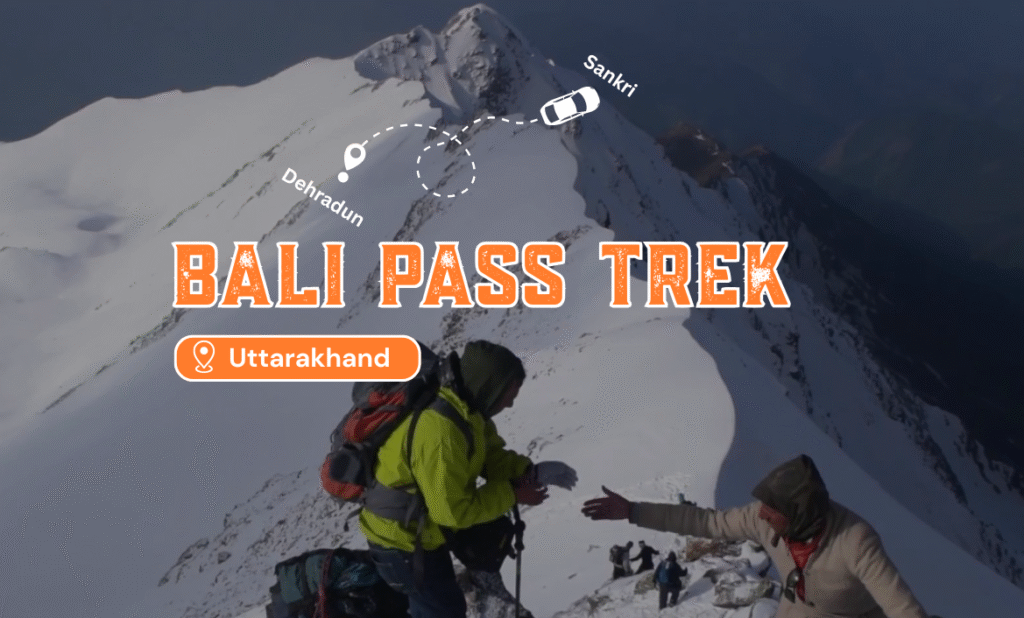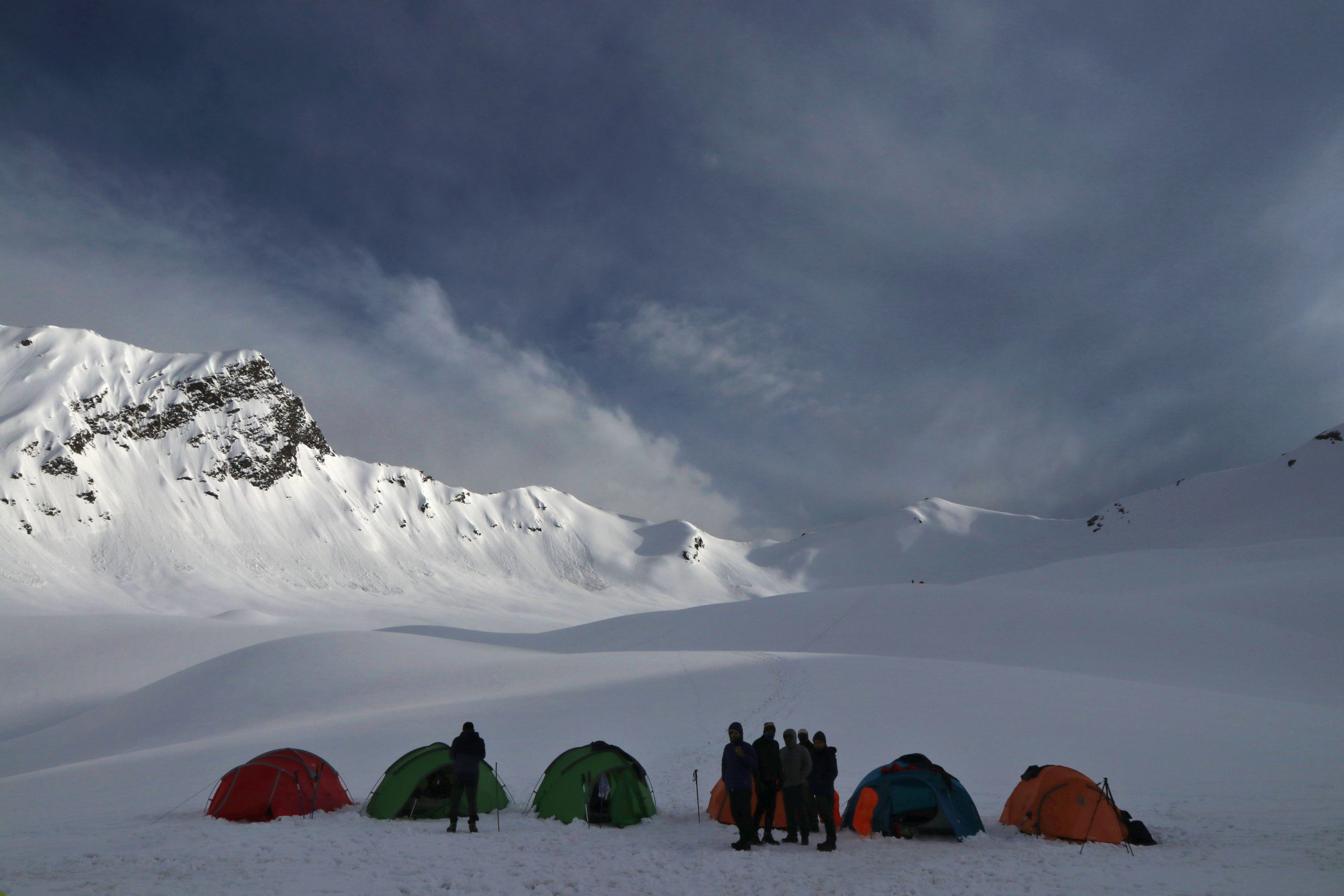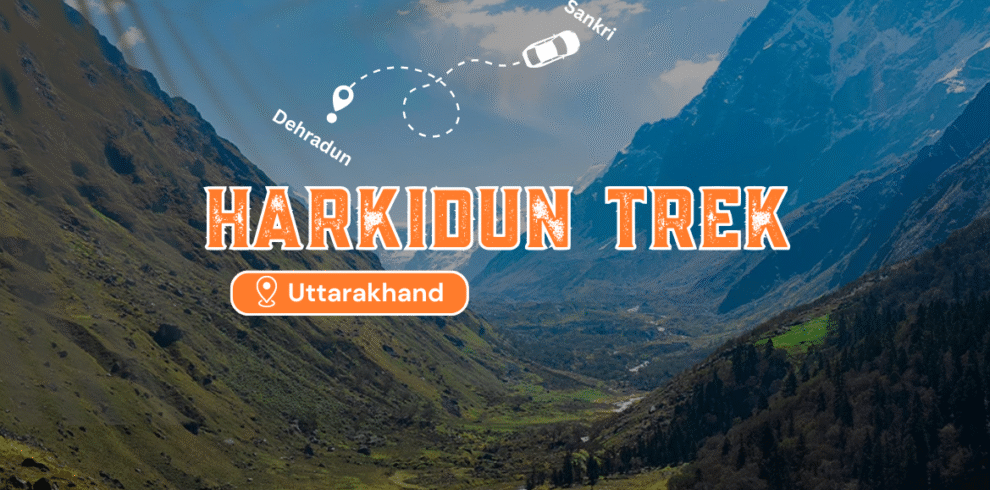Overview
Bali Pass Trek Overview
About Bali Pass Trek:
The show up of the Bali Pass trek is its changing landscapes from pine and fir forests to riverside camps to the surreal villages of Har Ki Dun valley to connection to Yamunotri valley to beautiful waterfalls to the alpine lake of Ruinsara to meadows overlooking Swargarohini peak and Bandarpunch ranges to snow-capped mountain tops and base camp & a thrilling high altitude summit like crossing. You can spot some of the wildlife of the Uttarakhand Himalayas during Bali Pass trekking — monals, the Himalayan ibex, and the endangered brown bear. Also, see mighty Kalanag (Black Peak) up close. Spend a full day beside the glacial Ruinsara Lake and walk across the two delightfully pretty meadows of Devsu Thatch and Thanga.
Quick Facts About Bali Pass Trek:
• Bali Pass Trek Duration: 8N/9D
• Bali Pass Trek Altitude: 16076 ft.
• Bali Pass Trek difficulty: Moderate
• Trek distance: 60 Kms
• Temperature: 20°C to -2°C
• Bali Pass Trek Best Time: May, June, mid-August to October
• ATM: You will find ATM in Mussorie
• Start Point/End Point: Dehradun
How to reach Dehradun:
By Air:
Jolly Grant Airport is the airport serving Dehradun, located about 25 km from the city. There is a daily flight from Delhi to Dehradun
By Rail:
Take the overnight train to Dehradun from Delhi
Nandadevi Express – Train no: 12205 (Departure 11:50pm; Arrival – 5:40am)
Dehradun Express – Train no: 12687 (Departure – 9:10pm; Arrival – 5:00am)
By Road:
There is a regular bus service from Delhi to Dehradun, from Delhi ISBT Kashmere Gate.
Bali Pass Trekking Inclusions:
1. Accommodation – You will be staying in tents/guesthouses on sharing basis for the trek.
2. Meals – Breakfast, lunch, snacks, and dinner. We provide simple, nutritious vegetarian food on all days of the trek
3. Camping charges – All trekking permits and forest camping charges are included in the Bali Pass trek package.
4. Trekking equipment – High-quality tents and sleeping bags in all the camps. Sleeping bags can withstand temperatures as low as -10 ºC.
5. Safety equipment – First aid kit, oxygen cylinders, oximeter, etc. will be with guide/trek leader and at the campsite as well to deal with emergencies.
6. Expert trek leaders – All our trek leaders are at least qualified in basic/advanced mountaineering and first aid course.
7. Expert trek support team – The mountain staff on this trek consists of certified guides, cooks, helpers, and porters.
8. Transfers – Transportation from Dehradun to Sankri on Day 1 to Yamunotri to Dehradun on day 9 is included.
Highlights
- The entire Southern Face is prominently visible from near Ruinsara lake till the top of the pass of peak Swargarohini I, II, III.
- Debshu Bugyal is the alpine meadows which enhances the beauty of the Bali pass trek.
- Endangered bird species makes it a popular place for bird watchers like golden eagle, the steppe eagle and the black eagle, the bearded vulture.
- Black Peak/Kalanag is visible on the way to waterfall camp from Seema & Banderpoonch is visible from top of the pass.
Itinerary
Bali Pass Trekking Inclusions:
- 1. Accommodation – You will be staying in tents/guesthouses on sharing basis for the trek.
- 2. Meals – Breakfast, lunch, snacks, and dinner. We provide simple, nutritious vegetarian food on all days of the trek
- 3. Camping charges – All trekking permits and forest camping charges are included in the Bali Pass trek package.
- 4. Trekking equipment – High-quality tents and sleeping bags in all the camps. Sleeping bags can withstand temperatures as low as -10 ºC.
- 5. Safety equipment – First aid kit, oxygen cylinders, oximeter, etc. will be with guide/trek leader and at the campsite as well to deal with emergencies.
- 6. Expert trek leaders – All our trek leaders are at least qualified in basic/advanced mountaineering and first aid course.
- 7. Expert trek support team – The mountain staff on this trek consists of certified guides, cooks, helpers, and porters.
- 8. Transfers - Transportation from Dehradun to Sankri on Day 1 to Yamunotri to Dehradun on day 9 is included.
The months of May, June, mid August to October are considered to be the best times to go for Bali pass trek. Around this time, the snowfall is at its lowest and the paths become clearer thus ensuring a safe route for trekkers.
Here is the list of essential things to carry for Bali Pass trek:
- Trekking Shoes- Bali Pass requires trekking shoes that are sturdy, have good grip, have ankle support and can handle snow.
- Backpack- For a trek like Bali Pass, you need a 50-60 litre backpack. Make sure your backpack has good hip support, shoulder support and quick access pockets.
- Clothes – wearing layers is the mantra in the mountains. Layers give you maximum protection from all elements. And when the weather changes in the mountains (as it happens every few hours), you take take off or put on layers as required.
- 3 T-shirts, You will need at least 3 insulation layers for this trek.
- You will need 2 light fleece layers, 1 full-sleeve light sweater.
- Two trek pants
- Two pairs of trek pants should suffice for this trek.







